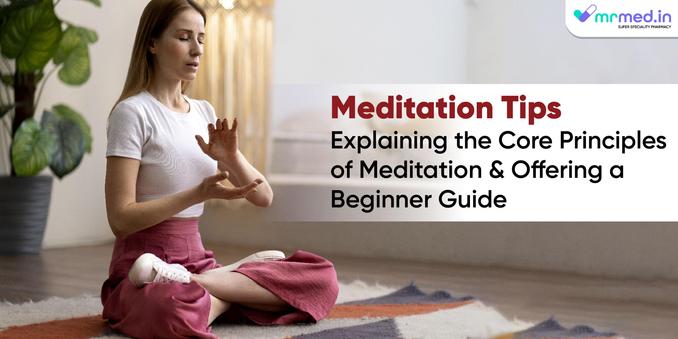Introduction
In the journey of mindfulness and meditation, understanding the nature of the mind is crucial. Two fundamental concepts in this exploration are vrittis and pratyayas. These Sanskrit terms, drawn from ancient yogic and Buddhist teachings, provide insights into the workings of the mind. This guide aims to clarify these concepts, helping you integrate this understanding into your daily life for deeper mindfulness and self-awareness.
What Are Vrittis?
Vrittis are the fluctuations, movements, or activities of the mind. They represent the dynamic nature of mental events that arise and subside. Think of vrittis as the waves on the surface of the ocean; they are ever-changing and reflect the mind’s constant activity.
What Are Pratyayas?
Pratyayas are the specific contents or objects of the vrittis. They are what the mind focuses on or the mental events that arise within these fluctuations. Pratyayas can be thoughts, sensations, emotions, memories, or impulses. Essentially, pratyayas are the specific items carried by the waves of vrittis.
The Relationship Between Vrittis and Pratyayas
To put it simply, vrittis are the general activities or fluctuations of the mind, while pratyayas are the specific objects or content of these activities. When you observe your mind, you notice the vrittis as the background activity and identify the pratyayas as the distinct events within this activity.
Examples of Pratyayas
Understanding pratyayas through examples can help clarify their role in mindfulness:
- Sensory Perception:
- The sensation of warmth from the sun on your skin.
- The sound of birds chirping outside.
- The taste of your morning coffee.
2. Emotional Response:
- A feeling of joy when thinking about a loved one.
- A surge of anxiety before a meeting.
- A wave of sadness remembering a past event.
3. Thoughts:
- Planning what to cook for dinner.
- Remembering a conversation you had yesterday.
- Imagining a future vacation.
4. Physical Sensation:
- The sensation of your breath moving in and out.
- An itch on your arm.
- The feeling of your heartbeat.
5. Memories:
- Recalling a childhood experience.
- Remembering a piece of advice someone gave you.
- Visualizing a scene from a past trip.
6. Impulses:
- The urge to check your phone.
- The impulse to stretch or change your sitting position.
- The desire to eat something.
Labeling the Qualities of Vrittis
When observing and labeling vrittis, consider the following qualities:
- Stable vs. Unstable:
- Stable Vrittis: These are steady and consistent. Your mind remains focused on a single pratyaya for an extended period. For example, a stable vritti might be a prolonged focus on your breath or a continuous feeling of calm.
- Unstable Vrittis: These are erratic and scattered. Your mind frequently shifts from one pratyaya to another. An example of unstable vrittis might be a constant jumping from one thought to another, unable to maintain focus.
2. Intense vs. Mild:
- Intense Vrittis: These are strong and impactful. They demand significant attention and can dominate your awareness. An intense vritti might be a powerful emotion, like sudden anger or joy, that captures your full attention.
- Mild Vrittis: These are gentle and subtle. They are present but do not overwhelm your awareness. A mild vritti might be a faint background sensation or a fleeting thought that doesn’t linger.
3. Frequent vs. Infrequent:
- Frequent Vrittis: These arise often, creating a sense of rapid mental activity. For example, recurring worries or repetitive thoughts that come up frequently throughout your day.
- Infrequent Vrittis: These appear rarely, leading to more gaps and quiet moments in your mental landscape. An infrequent vritti might be an occasional memory or a rare impulse.
Practical Application
Practical Application
By recognizing vrittis and pratyayas, you can deepen your mindfulness practice. Here’s a simple exercise to get started:
- Find a Comfortable Position: Sit or lie down comfortably.
- Set a Timer: Choose a manageable duration, such as 10 or 15 minutes.
- Breath Awareness: Begin with a few deep breaths to center yourself.
- Observe the Mind: Briefly shift your focus to the fluctuations of your mind. Notice thoughts, sensations, and feelings as they arise.
- Simply Notice: Briefly notice the overall quality of your mind’s activity. Are the vrittis generally stable or unstable? Observe these qualities without judgment, allowing your awareness to encompass the fluctuations without getting caught up in them.
- Identify the Pratyayas: Note the specific content of the vrittis, such as sensations, thoughts, or emotions.
- Breath Awareness: Return to the witnessing of your breath, perhaps noticing your belly or chest gently rising and falling.
- Repeat as Needed: When you’re ready, go back to briefly observing the vrittis and pratyayas.
- Return to Breath: Shift your focus back to a focused awareness of the breath and the open spaciousness of your mind.
- Rest: When you’re done, simply rest.
By recognizing vrittis and pratyayas, you can deepen your mindfulness practice. Here’s a simple exercise to get started:
Conclusion
Understanding the interplay between vrittis and pratyayas enhances your mindfulness practice, providing a clearer lens through which to observe the mind. By developing a felt sense of these fluctuations and their contents, you cultivate deeper awareness and equanimity. This practice not only enriches meditation but also brings greater clarity and peace into daily life.
Below is the original source video of the lecture with Swami Parvajika Devyanandaprana, from which these blog posts were inspired. Here you can explore the insightful teachings that have profoundly shaped the content and perspectives shared in this blog.
🙏🕊️🙏
https://youtu.be/tEK6wIanmgY?si=YUnu_NavrgGAWwRg
#BuddhistTeachings #consciousnessExploration #Equanimity #InnerPeace #meditation #MeditationGuide #meditationTechniques #MeditationTips #mentalClarity #mentalFluctuations #mentalStability #mindActivity #Mindfulness #mindfulnessExercises #mindfulnessPractice #Pratyayas #SelfAwareness #spiritualGrowth #Vrittis #yogicTeachings


